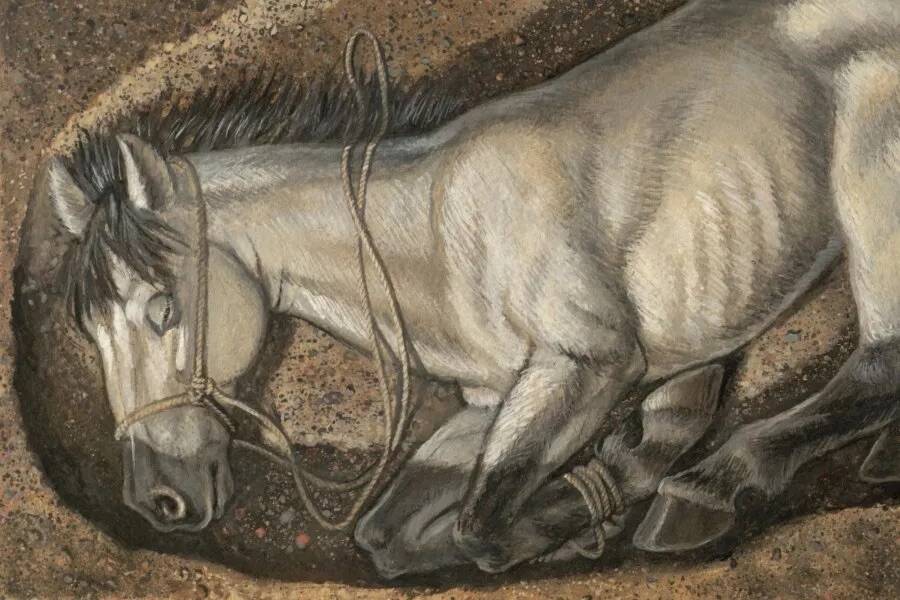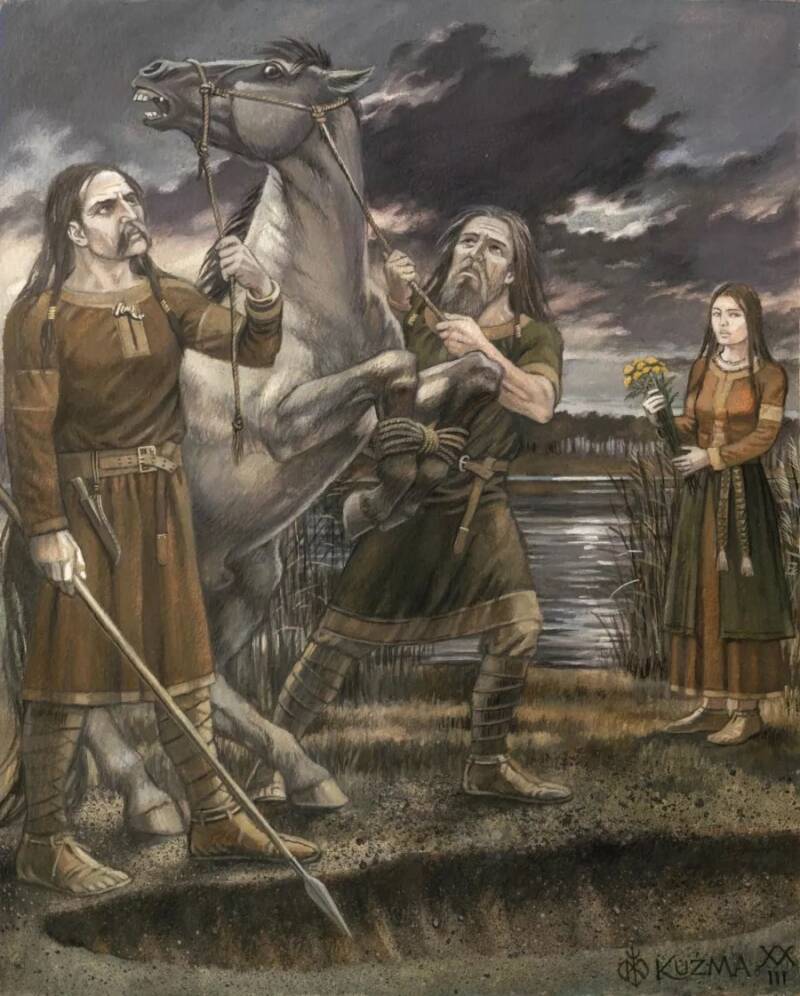An analysis of 74 horses' teeth from pagan burials reveals that many of the animals originated from Christianized Scandinavia and traveled nearly 1,000 miles before being sacrificed.

Mirosław Kuzma/Cardiff UniversityAn artist’s illustration of a sacrificed horse from a pagan burial ritual.
During the late medieval period, pagans in northern Europe’s Baltic region imported horses from neighboring Christian countries for use in funeral rituals, according to a new study from Cardiff University.
Published in the journal Science Advances, the study analyzed remains of horses found at various ancient ritual sites across Russia and Lithuania, revealing that at least some of these horses had come from across the Baltic Sea.
Notably, this discovery challenges previous notions that all horses sacrificed by Baltic pagans were from local breeds. What is more fascinating, however, is what this implies about the relationship between ancient Baltic pagan cultures and nearby Christian communities.
The Importance Of Horse Sacrifice Rituals In Pagan Cultures
Many pagan cultures considered horses to be sacred and powerful animals. As such, they were often sacrificed during important ceremonies. The sacrifice involved elaborate rituals where the horse would be ceremonially killed, often followed by feasts and offerings.
Such rituals were prominent among ancient Baltic tribes. Pagans in this region used sacrificial horses in funeral rituals up until they were Christianized around the 14th century C.E. In some cases, horses were buried alongside humans in Baltic cemeteries.
Researchers long believed that the horses sacrificed during these rituals were all of a local breed. But the new study — using a scientific technique known as strontium isotope analysis to analyze horse teeth from 74 different animals — shows that some of the sacrificed horses had traveled nearly 1,000 miles before being sacrificed.
How Ancient Horse Teeth Revealed Their Christian Origins
By analyzing the horses’ teeth, researchers could determine what combination of soil, water, and plants the animals were exposed to.
That specific chemical make-up creates a signature pattern that, when consumed by horses, shows up in the animals’ tooth enamel. Even hundreds of years later, those chemical traces can be used to identify where a particular horse originally came from.
The analysis also revealed that roughly one third of the tested horses were female, challenging previously held notions that Baltic pagans only sacrificed stallions in burial rituals.
In a press release from Cardiff University, study lead author Dr. Katherine French said, “This research dismantles previous theories that locally-procured stallions were exclusively selected for sacrifice. Given the unexpected prevalence of mares, we believe the prestige of the animal, coming from afar, was a more important factor in why they were chosen for this rite.”

Mirosław Kuzma/Cardiff UniversityAn artist’s representation of a medieval pagan horse sacrifice ritual.
Many of the imported horses came from regions we now recognize as Sweden and Finland, both of which were part of a Christianized Scandinavia. This study shows that, at one point at least, early Christians had a close, if somewhat tense, relationship with their pagan cousins across the Baltic Sea.
“Pagan Baltic tribes were clearly sourcing horses overseas from their Christian neighbors while simultaneously resisting converting to their religion,” said study co-author Dr. Richard Madgwick. “This revised understanding of horse sacrifice highlights the dynamic, complex relationship between Pagan and Christian communities at that time.”
Of course, Baltic pagans could not resist Christian influence for long, and the religion eventually spread to dominate a majority of the western world.
After reading about these pagan horse sacrifice rituals, learn all about Yule, the pagan festival that inspired Christmas. Then, meet Moloch, the pagan god of child sacrifice.





